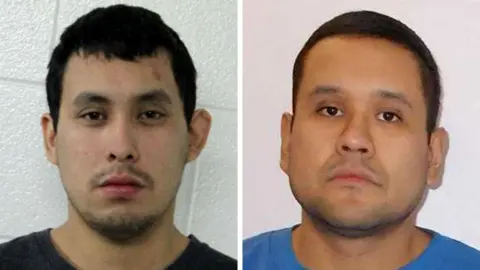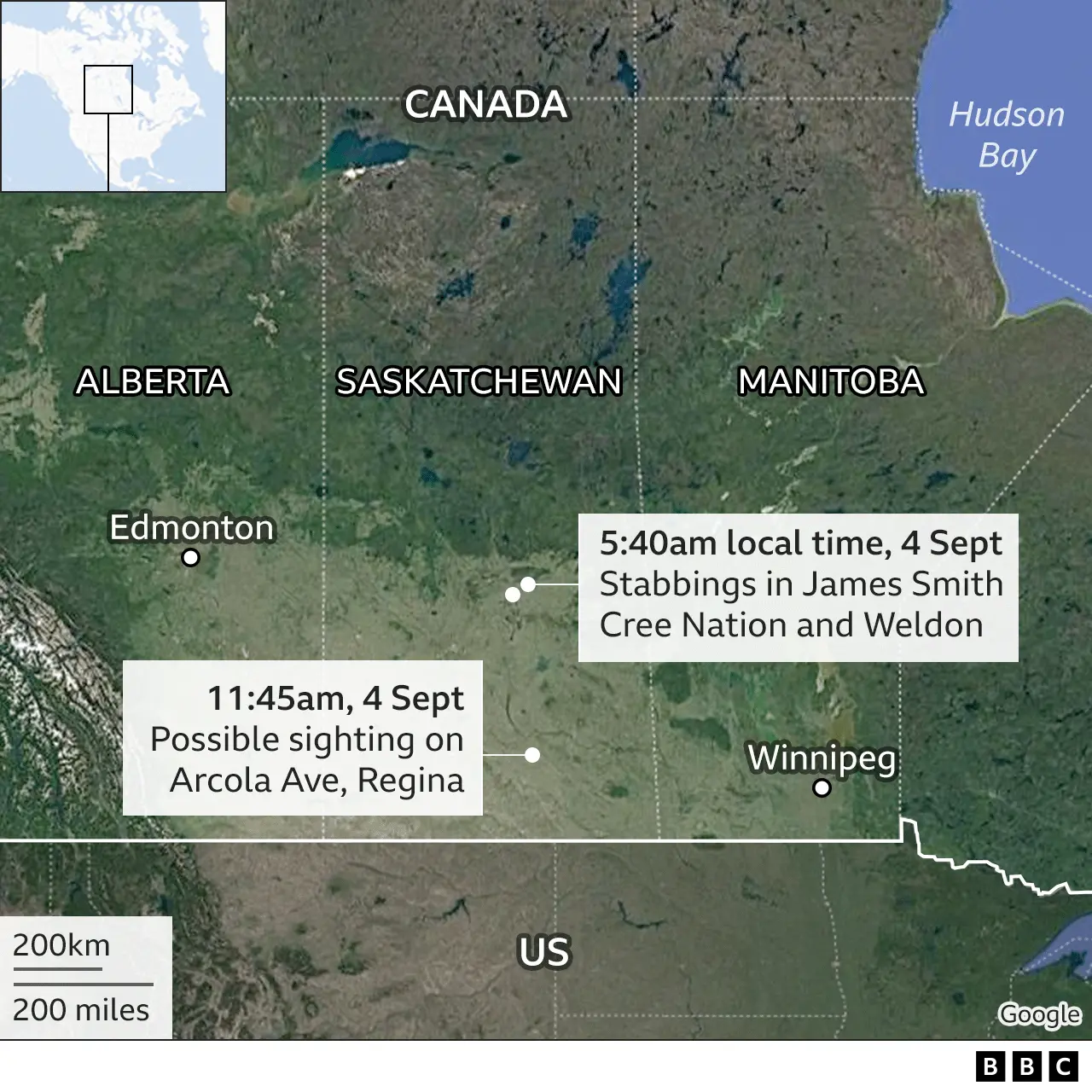Canada stabbings: One suspect found dead
 RCMP Saskatchewan
RCMP SaskatchewanCanadian police have found the body of one of two brothers wanted for a mass stabbing attack that left 10 people dead and 18 injured in the province of Saskatchewan on Sunday.
An officer said Damien Sanderson, 31, had injuries that did not appear self-inflicted - but gave no details.
He was found at the James Smith Cree Nation, the indigenous community where most of the victims lived.
Sanderson's brother Myles is at large and dangerous, police say.
The stabbing spree has rocked the usually peaceful province, with police investigating 13 different crime scenes.
The suspects' motives remain unknown. Both were charged with murder, despite not being arrested.
On Monday police said Damien Sanderson's body had been found "in a heavily grassed area in proximity to a house that was being examined".
His injuries were "not believed to be self-inflicted at this point", police Assistant Commissioner Rhonda Blackmore told reporters.
His 30-year-old brother might also have sustained injuries and police have warned the public he might seek medical assistance. But police did not say whether he was responsible for his brother's death.
Myles Sanderson, who was previously known to the police, is described as having an "extensive and lengthy criminal record" dating back a number of years.
On Monday evening, chief Bobby Cameron of the Federation of Sovereign Indigenous Nations, which represents all 74 First Nations of Saskatchewan, urged residents to report with any information about the attacks,
"Someone out there knows something," he said in a statement. "We beg you to come forward for the sake of the families."
In Regina, the province's capital where the suspects were last seen alive, communities are on edge.
But in the city centre on Monday evening, there were no obvious signs of a manhunt. The city was mostly quiet as families gathered to enjoy the Labour Day holiday, the unofficial end to summer.
Every so often, that calm was interrupted by alerts ringing on mobile phones, warning of two adult male suspects, and then just one, still on the run.
"Every time a new alert is broadcast… the families and communities are holding their breath for fear of new fatalities or injuries," Mr Cameron said.
"This kind of violence, or any kind of violence has no place in our country," said Prime Minister Justin Trudeau.
He said that "tragedies like these have become all too commonplace" - adding that Saskatchewanians and Canadians would be there for each other in "times of difficulty and anguish".

First Nations: The basics
- The term refers to Canada's indigenous communities, which enjoy a degree of self-government in matters including health, education and taxation
- The communities suffer disproportionately from poverty, crime and other problems widely seen as a legacy from history
- The Cree are one of Canada's largest First Nations with over 350,000 people.

Many of the victims were residents of the remote James Smith Cree Nation, home to about 2,000 people - leaving members of Canada's indigenous community especially shaken. A state of emergency was declared in Saskatchewan.
Canadian media have identified some of the victims, although no official details have been provided by authorities.
Saskatchewan's 1.2 million residents are scattered across 250,000 square miles. Clusters of tight-knit communities, separated by stretches of highways, dot the flat expanse of farmland. Most places feel remote.

